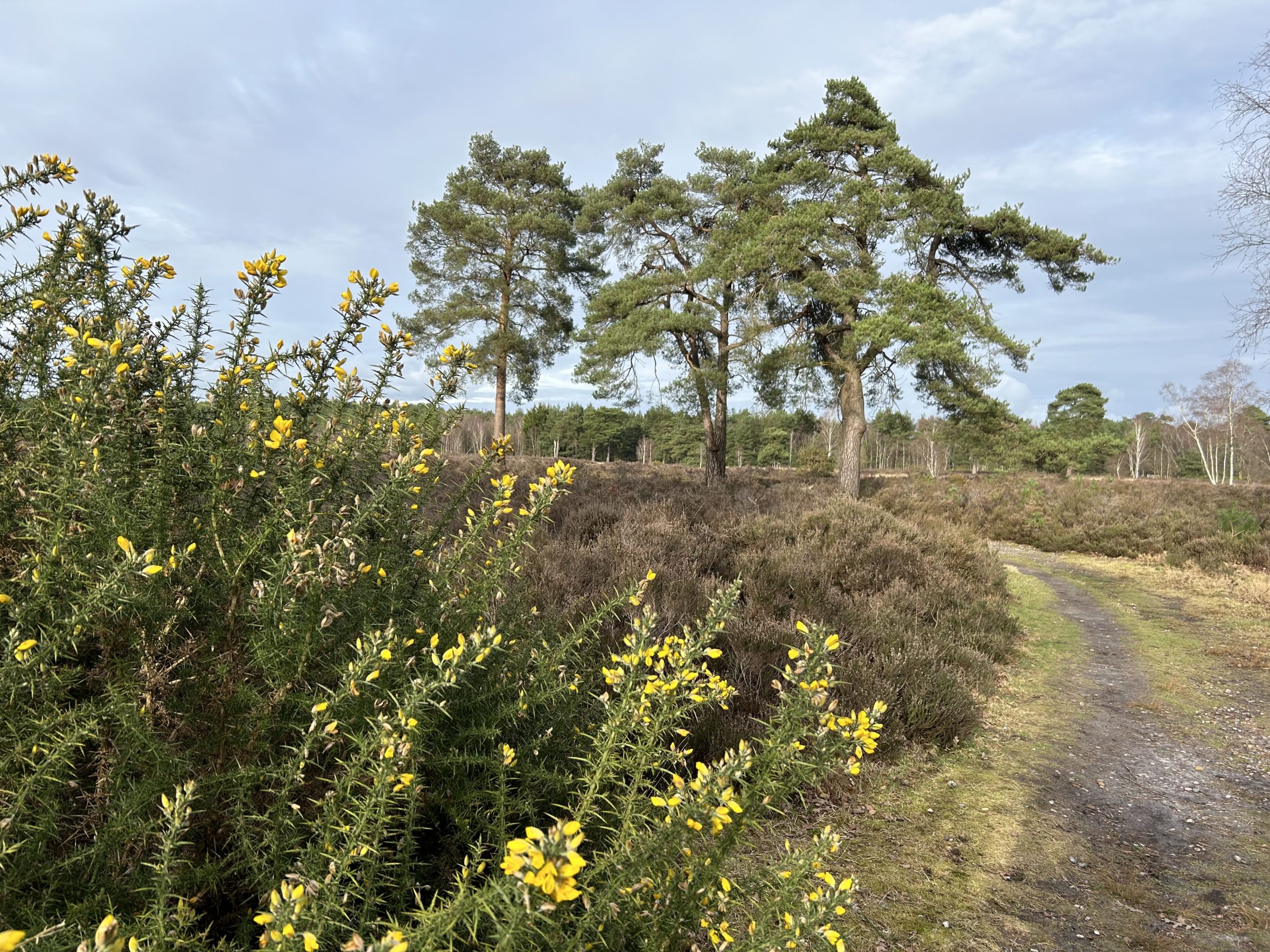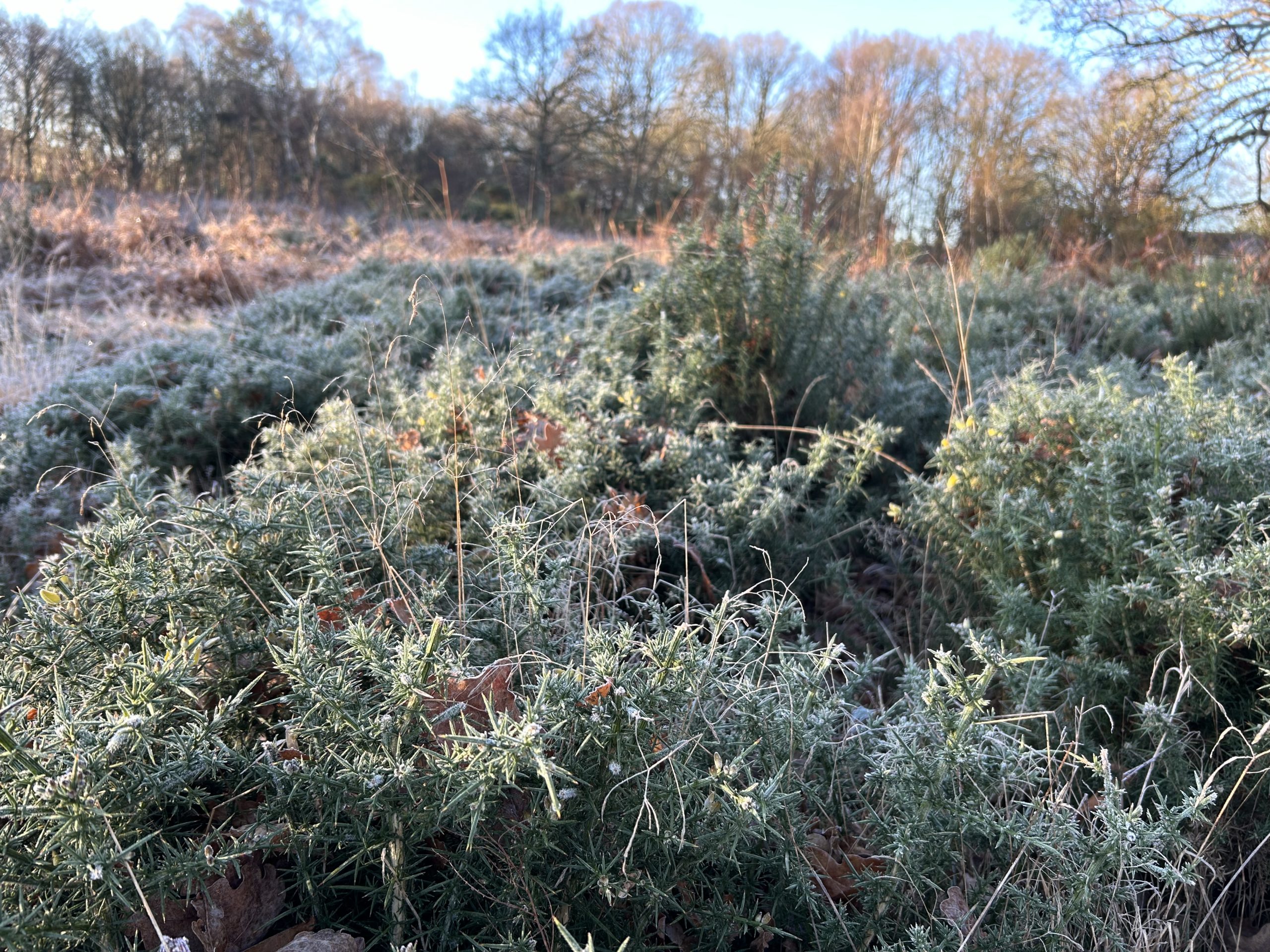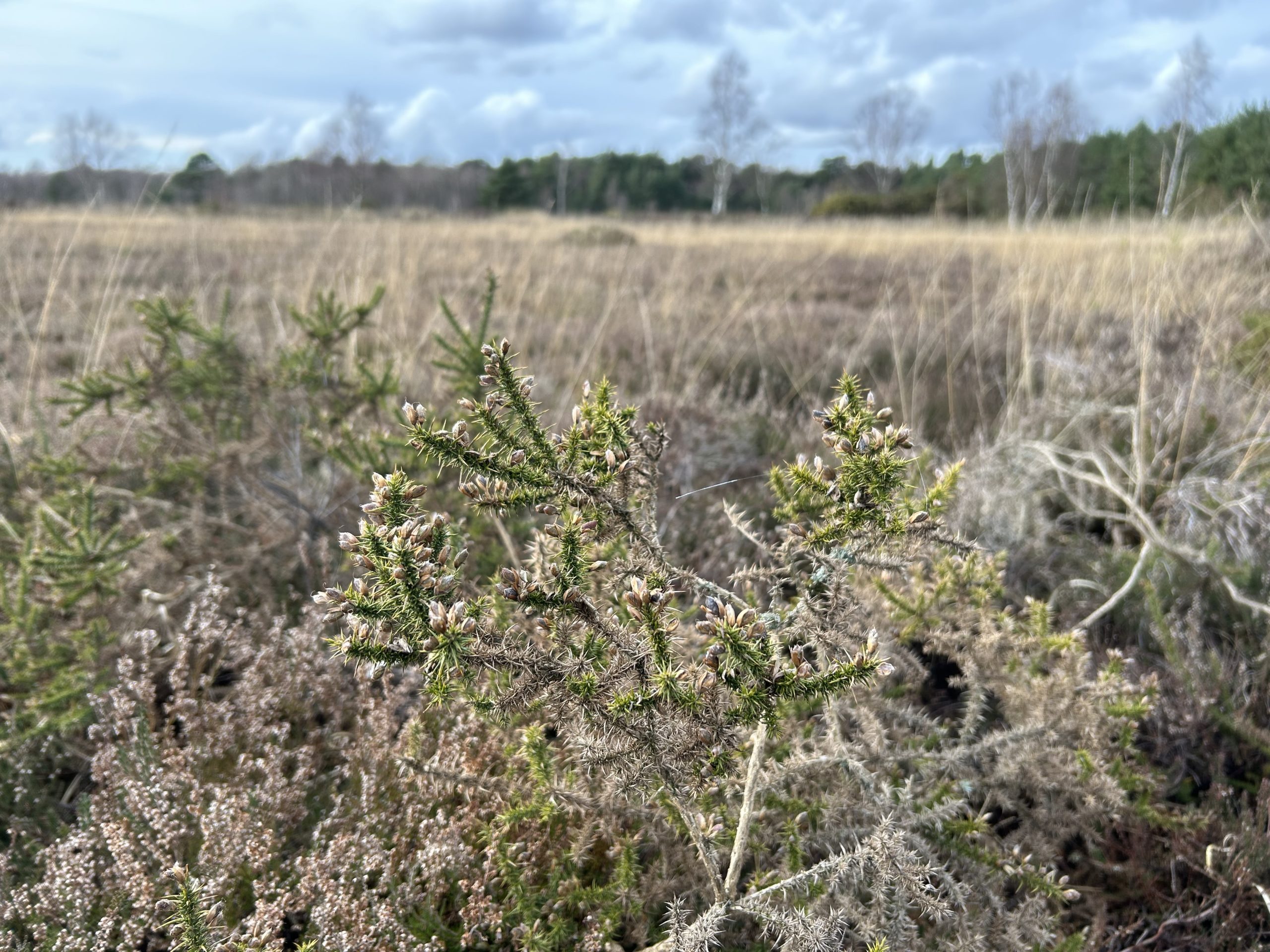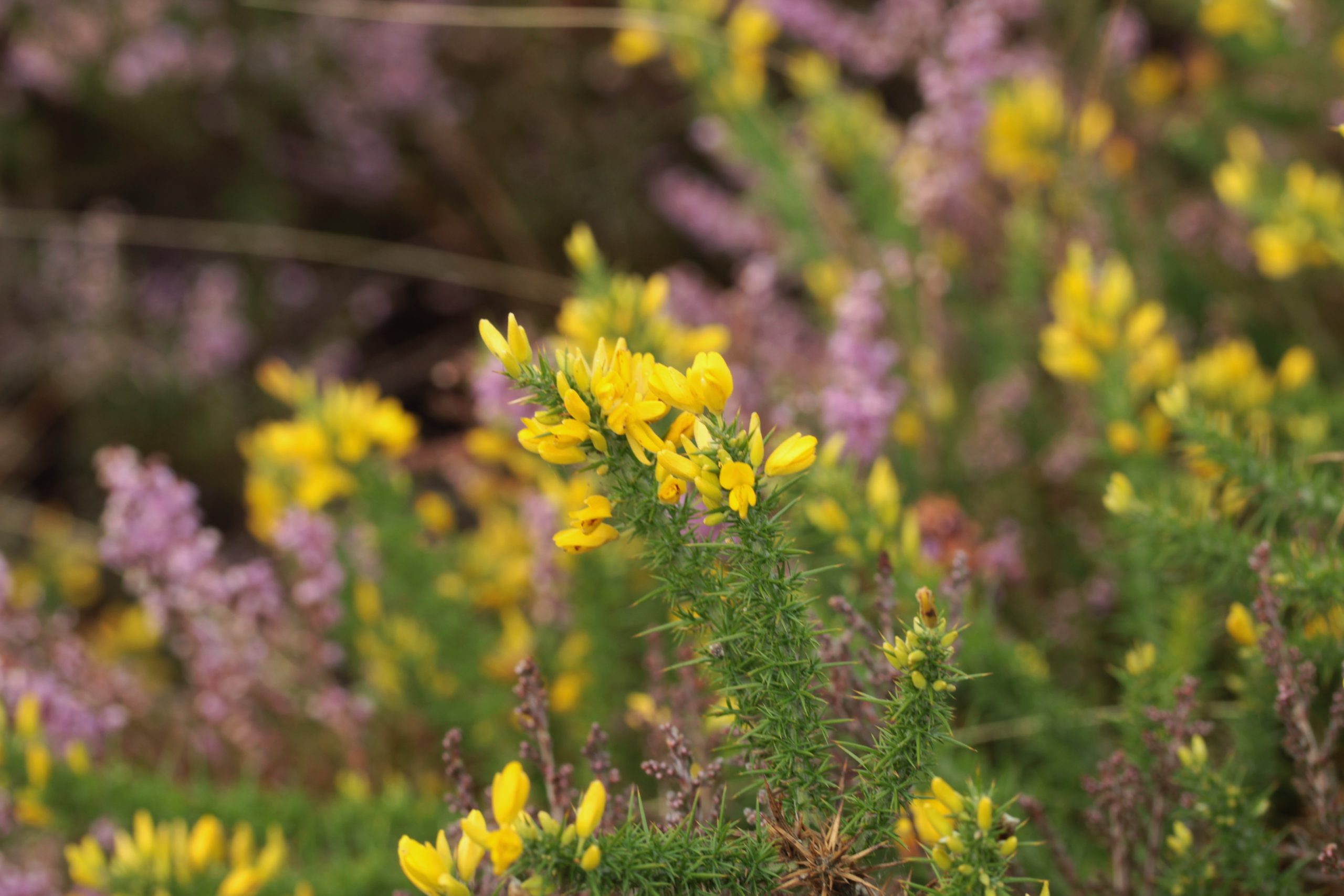Gorse in winter
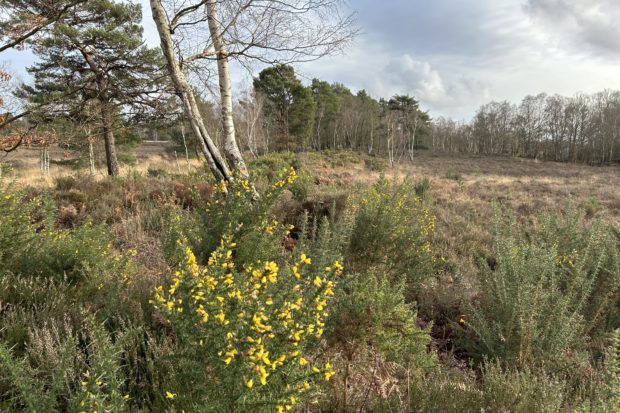
Last week I wrote about heather in winter. So how about that other heathland stalwart, gorse? At this time of year the flowering gorse is a picture and sometimes people ask us why the land managers have cut it back so hard. The thing is, you can have too much of a good thing, and if it’s happy, gorse can be a bit of a thug. It’s a good thing to keep it under control and keep the shrubs compact and dense. The older, leggy gorse isn’t much good, but nice compact shrubs make good foraging habitat for Dartford Warblers and give them shelter during the winter. Even if it’s cut right down to the ground, it’ll grow back. Grazing helps to keep it compact too.
You’ve maybe heard the old saying that when gorse is in flower, kissing’s in season! That’s lucky because we have two species of gorse here on the Thames Basin Heaths Special Protection Area, and that helps to keep the supply of flowers coming.
At the moment, the European Gorse is having its moment, and will keep on going well into spring. Its tall, dark green stems are adorned with coconut-scented flowers. Part of the Pea family, you’ll notice the similarity with your Garden Peas and Sweet Peas. Just a lot spinier!
Later in the summer the Dwarf Gorse will take over. These smaller shrubs have a more yellowy-green colour and the stems and spines are noticeably smaller. As the Common Heather comes into bloom in late summer, the Dwarf Gorse will accompany it. Such a pretty colour combination!
Sarah
Thames Basin Heaths Partnership

#PawsOnPathsPlease

